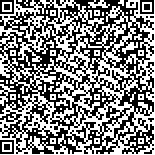|
|
| |
|
|
| 本文已被:浏览 570次 下载 423次 |

码上扫一扫! |
|
|
| 新型冠状病毒感染本土病例中七情过极对脏腑气机影响的研究 |
|
赵启亮1,2, 张东3, 范爽3, 张慧琪1,2, 谢云雪1,2,4, 丁国耀1,2,4, 任怡3, 贾敬波3, 马兆润3, 谢祎3, 刘旻1,2
|
|
1.天津中医药大学第一附属医院感染疾病科, 天津 300381;2.国家中医针灸临床医学研究中心, 天津 300381;3.天津市海河医院结核病科, 天津 300350;4.天津中医药大学研究生院, 天津 301617
|
|
| 摘要: |
| [目的] 探析新型冠状病毒感染本土病例中医七情过极对脏腑气机影响的规律。[方法] 收集2019年2月—2020年8月天津市海河医院收治的新型冠状病毒感染本土确诊病例130例,采集入院时、住院1周时、出院时3个时点的临床资料,通过描述性统计学分析总结3个不同时点七情及气机的主要特征变化。采用关联规则法分析3个时点七情特征和气机升降出入的联系,揭示七情影响气机升降出入的潜在规律。[结果] 共纳入患者130例,入院时,七情特征以忧(56.15%)、思(44.62%)、怒(26.92%)、悲(25.38%)为主,七情严重程度评分为忧(1.17)>思(0.92)>悲(0.53)>恐(0.29)>惊(0.28)>怒(0.53);气机特征以入(41.54%)、降(30.77%)、升(23.85%)为主,气机严重程度评分为入(1.92)>降(1.55)>升(0.82)>出(0.24);住院1周时,七情特征以思(34.62%)、忧(32.31%)、悲(23.08%)、怒(22.32%)为主,七情严重程度评分为思(0.69)>忧(0.55)>悲(0.43)>怒(0.34)>恐、喜(0.08)>惊(0.04);气机特征以降(25.38%)、入(23.85%)、升(19.23%)为主,气机严重程度评分为入(0.77)>降(0.69)>升(0.42)>出(0.03);出院时,七情特征以忧(30.77%)、思(29.23%)、喜(23.85%)、悲(19.23%)为主,七情严重程度评分为忧(0.44)>思(0.33)>喜(0.30)>悲(0.25)>恐(0.18)>怒(0.12)>喜(0.30)>惊(0.03);气机特征以降(26.9)、入(21.54%)、升(11.54%)为主,气机严重程度评分为降(0.27)>入(0.22)>升(0.12)>出(0)。关联规则分析显示,入院时,支持度最高的是入+忧(41.54%),置信度最高的是悲+降/入/忧((100%);住院1周时,支持度最高的是降+悲/入/忧(25.39%),置信度最高的是悲/入/降+忧(100%);出院时,支持度最高的是忧+降(30.77%),置信度最高的是忧+降(97.14%)。[结论] 天津地区新型冠状病毒感染(COVID-19)本土患者住院期间的七情特征以“忧、思”为主,气机特征以“入、降”为主,住院过程中的情志过极和气机失调均呈现好转的趋势,情志“忧、思”过极导致气机的“入、降”失调,病机上表现为肺气升降失司;脾气不升、脾胃失和;气滞于肺、脾、胃。 |
| 关键词: 新型冠状病毒感染 中医七情 脏腑气机 升降出入 |
| DOI:10.11656/j.issn.1672-1519.2023.08.02 |
| 分类号:R511 |
| 基金项目:天津市中医药重点领域科技项目(2021010)。 |
|
| A study on the influence of disordered seven emotions on the qi movement of Zang-fu organs in local COVID-19 patients |
|
ZHAO Qiliang1,2, ZHANG Dong3, FAN Shuang3, ZHANG Huiqi1,2, XIE Yunxue1,2,4, DING Guoyao1,2,4, REN Yi3, JIA Jingbo3, MA Zhaorun3, XIE Yi3, LIU Min1,2
|
|
1.Infectious Diseases Department, First Teaching Hospital of Tianjin University of Traditional Chinese Medicine, Tianjin 300381, China;2.National Clinical Research Center for Chinese Medicine Acupuncture and Moxibustion, Tianjin 300381, China;3.Tuberculosis Department, Tianjin Haihe Hospital, Tianjin 300350, China;4.Graduate School, Tianjin University of Traditional Chinese Medicine, Tianjin 301617, China
|
| Abstract: |
| [Objective] To explore the influence of disordered seven emotions of traditional Chinese medicine on qi movement of Zang-fu organs in local COVID-19 patients. [Methods] A total of 130 local confirmed COVID-19 cases admitted to Tianjin Haihe Hospital from February 2019 to August 2020 were collected. Clinical data were collected at admission,one week in hospital,and discharged from hospital. Descriptive statistics were used to summarize the main characteristics and changes of seven emotions and qi movement at the three different time points. The association rules algorithm is used to analyze the relationship between the seven emotions and movement of qi. Finally,we reveals the potential rule of seven emotions influence on the movement of qi. [Results] A total of 130 patients were included. On admission,the main characteristics of seven emotions were melancholy(56.15%),anxiety(44.62%),anger(26.92%) and grief(25.38%);the severity score of seven emotions was melancholy(1.17)>anxiety(0.92)>grief(0.53)>fear(0.29)>fright(0.28)>anger(0.53);the characteristics of qi movement were mainly entering(41.54%),descending(30.77%) and ascending(23.85%),and the severity score of qi movement was entering(1.92)>descending(1.55)>ascending(0.82)>exiting(0.24). After 1 week in hospital,the characteristics of seven emotions were mainly anxiety(34.62%),melancholy(32.31%),grief(23.08%),anger(22.32%),and the severity score of seven emotions was anxiety(0.69)>melancholy(0.55)>grief(0.43)>anger(0.34)>fear,joy(0.08)>fright(0.04);the characteristics of qi movement were mainly descending(25.38%),entering(23.85%) and ascending(19.23%). The severity score of qi movement was entering(0.77)>descending(0.69)>ascending(0.42)>exiting(0.03). When discharged from hospital,the characteristics of seven emotions were mainly melancholy(30.77%),anxiety(29.23%),joy(23.85%),grief(19.23%). The severity score of seven emotions was melancholy(0.44)>anxiety(0.33)>joy(0.30)>grief(0.25)>fear(0.18)>anger(0.12)>joy(0.30)>fright(0.03);the characteristics of qi movement were mainly descending(26.9),entering(21.54%) and ascending(11.54%),and the severity score of qi movement was descending(0.27)>entering(0.22)>ascending(0.12)>exiting(0). The association rules algorithm showed that the highest degree of support was entering+melancholy(41.54%),and the highest degree of confidence was grief+descending/entering/melancholy(100%) at admission. After 1 week in hospital,the highest degree of support was descending+grief/entering/melancholy(25.39%),and the highest degree of confidence was grief/entering/descending+melancholy(100%). At the time of discharge,the highest degree of support was melancholy+descending(30.77%),and the highest degree of confidence was melancholy+descending(97.14%). [Conclusion] During the hospitalization of COVID-19 patients in Tianjin area,the main characteristics of seven emotions were "melancholy and anxiety",and the main characteristics of qi movement were "entering and descending". The disordered emotions and qi movement show a trend of improvement during hospitalization. The disordered emotions "melancholy and anxiety" lead to the "entering and descending" disorder of qi movement, and the resulting pathogenesis were lost the balance between ascending and descending of lung qi movement,fail to ascending of spleen qi,disharmony between spleen and stomach,qi stagnates in lung,spleen and stomach. |
| Key words: COVID-19 seven emotions of traditional Chinese medicine qi movement of Zang-fu organs ascending,descending,exiting and entering |
|
|
|
|
